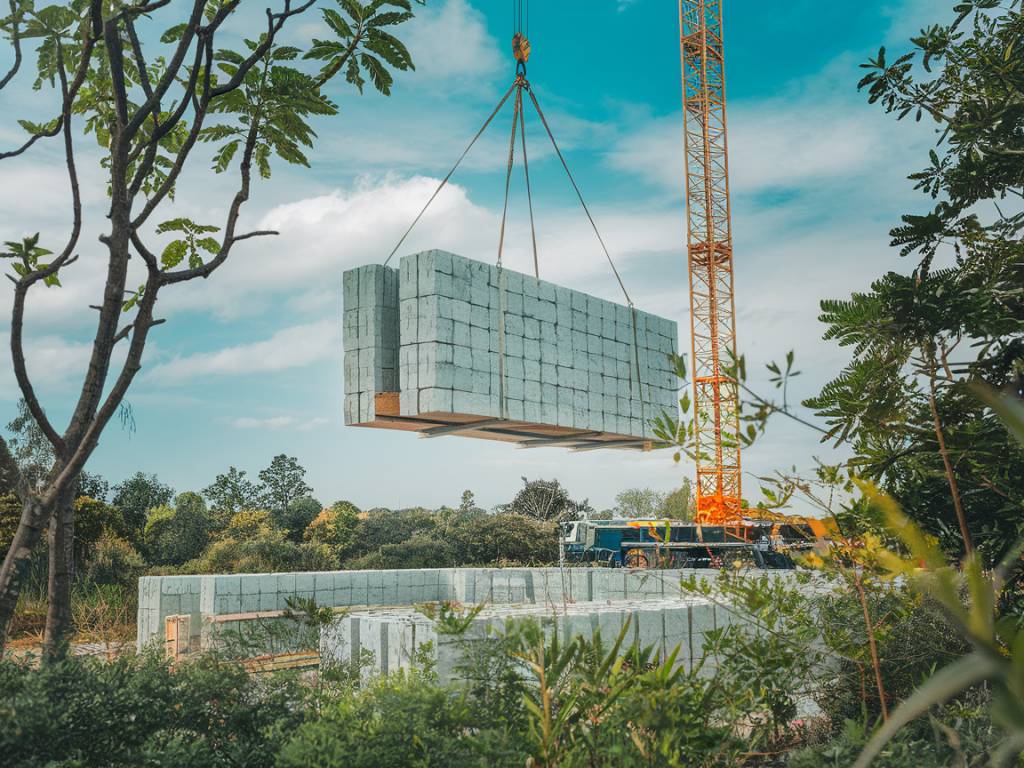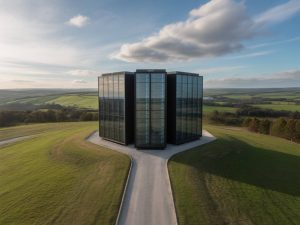Eco-Friendly Materials: A Game-Changer in the Construction Industry
As climate change and resource shortages loom large, the construction industry—one of the world’s largest contributors to carbon emissions—faces immense pressure to innovate. Enter eco-friendly materials: a forward-thinking solution that’s not only addressing environmental challenges but also unlocking new possibilities in building design and construction techniques. But how exactly are these green materials transforming the industry? Let’s explore.
A Shift Toward Sustainability: Why It Matters
The traditional construction sector is infamous for its heavy reliance on concrete, steel, and other materials with high carbon footprints. In fact, concrete alone is responsible for 8% of global carbon dioxide emissions. With governments and organizations setting ambitious sustainability goals, the need for alternatives has never been greater. Eco-friendly materials not only reduce environmental impact but also offer benefits like energy efficiency, waste reduction, and improved indoor air quality. The time to innovate is now.
What Are Eco-Friendly Materials?
Before diving into examples, let’s define what qualifies as « eco-friendly. » These materials are often sustainable, biodegradable, or recyclable, with low energy requirements for their production and minimal ecological impact. They aim to minimize waste and promote energy efficiency—elements that are becoming non-negotiable in modern construction projects.
Game-Changing Eco-Friendly Materials
Here are some of the innovative materials paving the way for a greener construction industry:
- Bamboo: Often referred to as « nature’s steel, » bamboo is extremely strong, lightweight, and flexible. It grows rapidly, making it a highly renewable resource for structural applications and even flooring.
- Hempcrete: Made from a mix of hemp fibers, lime, and water, hempcrete is a biodegradable material with excellent insulation properties. It’s breathable, fire-resistant, and absorbs carbon dioxide during its lifecycle.
- Recycled Steel: Steel is 100% recyclable without any loss of quality. Using recycled steel can significantly reduce energy requirements and emissions while still offering immense durability.
- Mycelium: This biodegradable material, made from fungi, acts as an excellent alternative to synthetic insulation. It’s lightweight, renewable, and surprisingly strong for its weight.
- Cross-Laminated Timber (CLT): A favorite for architects and builders, CLT is a wood-based material with remarkable strength and sustainability. It’s an increasingly popular alternative to steel and concrete in mid-rise buildings.
These materials are just the tip of the iceberg. The beauty of innovation in construction is that new eco-friendly solutions emerge with each passing year.
Innovation Meets Aesthetics
For years, there was a misconception that using sustainable materials meant compromising on design. Fortunately, that’s no longer the case. Architects and designers are now showcasing incredible creativity with eco-friendly materials, proving that sustainable construction can be both functional and visually stunning.
For example, cork—a material commonly associated with wine bottles—is making a comeback as a cladding material. Its natural texture and rich tones offer a warm, modern aesthetic, while its insulating properties add practical value. Similarly, rammed earth construction is gaining traction for its earthy tones and visually striking appearance, offering both durability and a reduced carbon footprint.
Cost Efficiency: Breaking the Myth
One common critique of eco-friendly construction is the assumption that it’s expensive. While some materials may have a higher upfront cost, they often pay for themselves over time through energy savings, reduced maintenance requirements, and longer lifespans. For instance, homes insulated with mycelium or hempcrete can significantly lower heating and cooling expenses, benefiting both the planet and the wallet.
Additionally, as demand increases and technologies improve, prices for sustainable materials are expected to drop. Just as solar panels have become more affordable over the past decade, green construction materials are on a similar trajectory.
Case Studies: Eco-Friendly Construction in Action
Let’s take a look at some real-world applications of eco-friendly materials that are making waves in the construction industry:
1. The Bullitt Center, Seattle: Often called « the greenest commercial building in the world, » this six-story office space was constructed with sustainably sourced wood and features numerous energy-saving measures. It generates its own energy through solar panels and minimizes waste through composting systems.
2. The Edge, Amsterdam: Renowned for being one of the smartest and most sustainable office buildings globally, The Edge integrates recycled materials and highly efficient insulation systems. Its innovative approach sets a benchmark for eco-friendly offices.
3. Sustainable Homes by ICON: ICON, a construction technology company, specializes in 3D printing homes using eco-friendly materials like recycled concrete and bioplastics. These homes are cost-effective, reduce material waste, and can be built in less time compared to traditional methods.
The Role of Green Certifications
Certifications like LEED (Leadership in Energy and Environmental Design) and BREEAM (Building Research Establishment Environmental Assessment Method) have become industry gold standards. Projects that incorporate eco-friendly materials and sustainable practices are more likely to earn these certifications, adding long-term value to properties.
Green certifications can also be a powerful marketing tool. As consumers become more eco-conscious, buyers and tenants increasingly prioritize sustainable properties, making certified buildings highly desirable in the competitive real estate market.
Challenges and the Road Ahead
While the rise of eco-friendly materials is promising, the construction industry faces several challenges. For starters, there’s a need for greater awareness and education among industry professionals about the benefits and applications of these materials. Additionally, logistical obstacles, such as supply chain limitations and code compliance, can slow adoption.
Yet, the momentum is undeniable. Governments, architects, engineers, and developers are collaborating to overcome these barriers and scale up the use of sustainable solutions. Initiatives like tax incentives for green construction and investments in R&D are accelerating this transition.
Your Role in Driving Change
Whether you’re a construction professional, an architect, or simply someone passionate about sustainability, you have an essential role to play in advocating for eco-friendly construction. Ask questions, seek alternatives, and spread the word. After all, every small step adds up to make a significant difference.
The future of construction is green. By adopting eco-friendly materials, we’re not just building structures—we’re building a healthier planet for generations to come. Now, isn’t that a foundation worth laying?






More Stories
Powering Data Centers Sustainably: The Role of Renewable Energy in the Digital Age
Integrating Biophilic Design with Green Technology: A New Paradigm for Sustainable Living
How virtual reality is transforming modern manufacturing processes